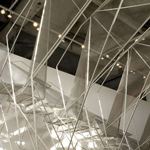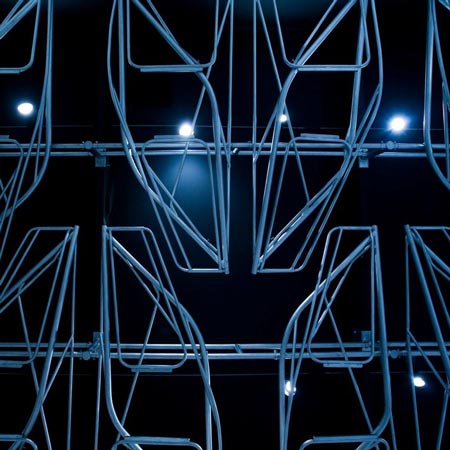
Pendulum Plane by Oyler Wu Collaborative
Architects Oyler Wu Collaborative have designed a moving, ceiling-mounted installation for the LA Forum for Architecture and Urban Design in Los Angeles, USA.
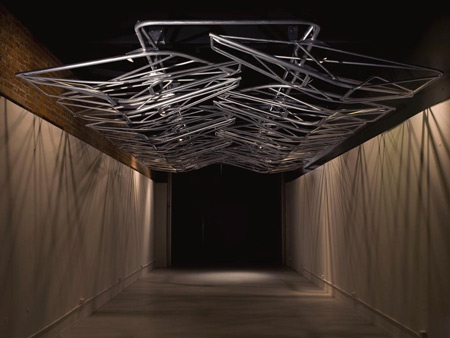
The articulated structure, called Pendulum Plane, is made from aluminium tubes and can be used to hang display boards in different configurations.
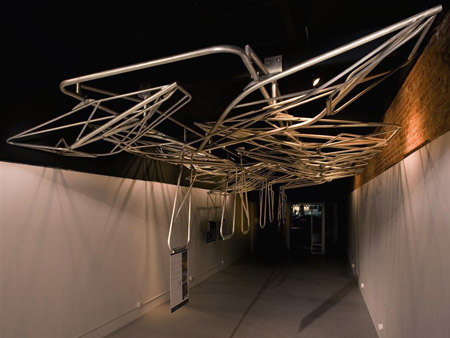
Here's some more information from the architects:
--
PENDULUM PLANE
The LA Forum for Architecture and Urban Design sponsored an open competition in the Spring of 2008 to design what they termed a “liner” for their newly acquired headquarters on Hollywood Boulevard. Because the space is shared between Woodbury University and the Los Angeles Forum for Architecture, the competition brief asked for something that could be moved from the space and stored while not in use by the Forum.
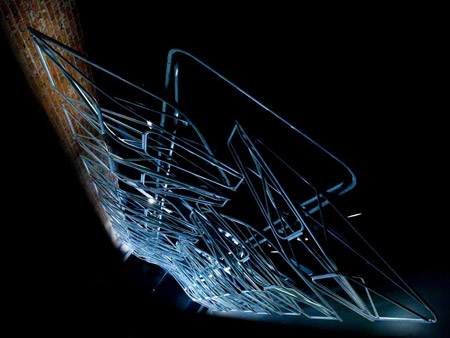
The initial starting point was very much a reaction to the project brief in the sense that it was not exactly the right approach. Anything of real architectural value within the space should be an integral and constant part of the experience of the space.
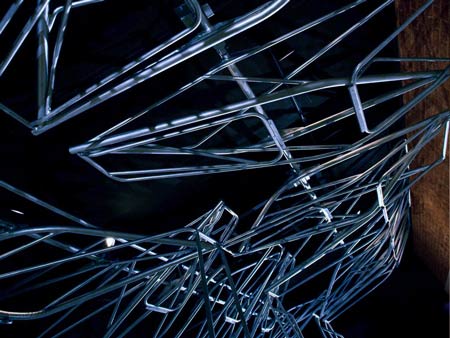
The challenge came in considering how to introduce a system that can have the most amount of spatial and functional impact but still allow for existing functions (i.e. pin up space for Woodbury) to occur on occasions. The idea of using the ceiling was the right combination of 1) maximizing the spatial experience within the space and 2) providing something that could be tucked away when required.
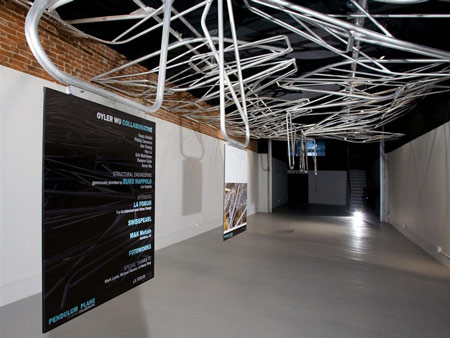
The project subverts that idea of storage by creating a system that capitalizes on the idea of variability. The proposal performs both spatially and functionally in two ways. It consists of an intricate ceiling system that performs both as a ceiling as well as a vertical plane that can shape the space in multiple dimensions.
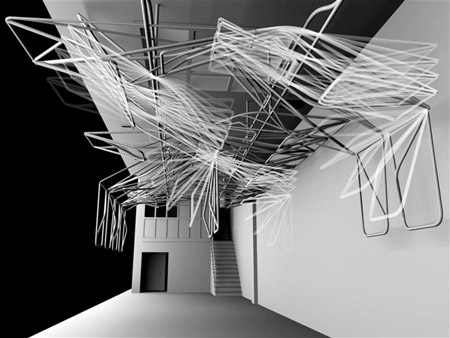
It also functions as a variable display system along the wall or in the middle of the space. When in the closed position, each individual unit is self-balanced on a hinge and hovers above the space. At both ends of the unit is a smaller hinged frame that may be rotated. When either of the frames is opened, the balance of the unit shifts, allowing the smaller hinged frame to be lowered into position that is optimal for hanging display panels. With panels running along both sides of the space, the system provides display options along the perimeter of the space, along a central spine, or a combination of the two.
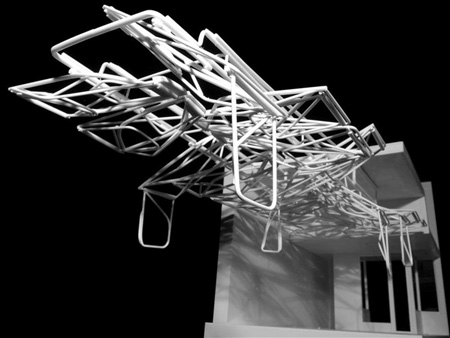
Oyler Wu was given a $7,500 budget to fabricate the installation, which was completed August 2008. The system includes two different units (one being the mirrored version of the other) as well as a truss that is supported by the existing ceiling. Constructed almost entirely of welded aluminum tubes, the units measure 96” x 40”, and are designed to allow for the display of up to 42” boards. Even though each of the units operates individually, different spatial configurations can be formed by lowering consecutive panels to create more of a continuous spatial divide.
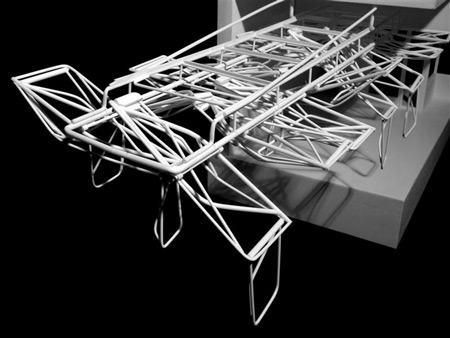
Engineering: Buro Happold, Los Angeles
Project Design and Fabrication Team: Dwayne Oyler, Jenny Wu, Phillip Cameron, Jian Huang, Huy Le, Erik Mathiesen
More about Oyler Wu Collaborative on Dezeen:
.
